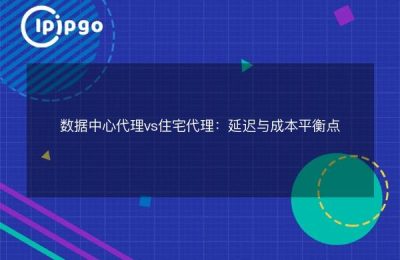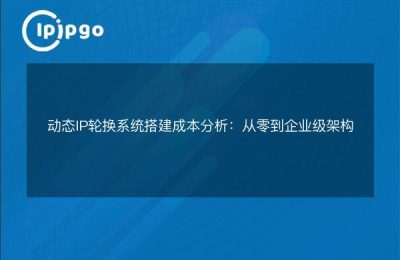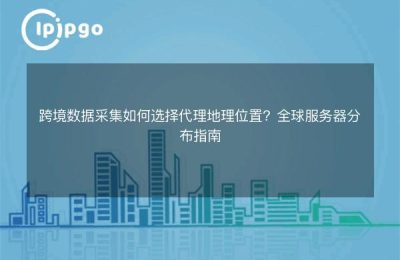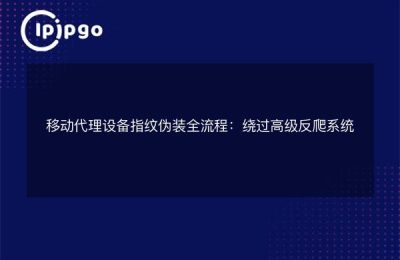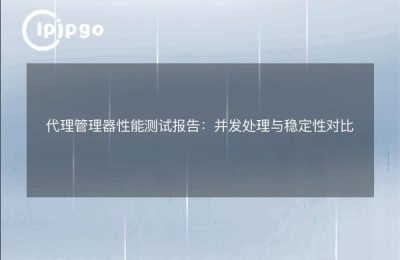
Core Logic of the Residential IP Dynamic Switching Solution
A lot of people use proxy IPs withAccount Linkage BlockingThe Problem. The core of dynamic switching of residential IPs isSimulate the online behavior of real users, such as the IP changes generated by the daily automatic redialing of ordinary home broadband. When using ipipgo's residential IP pool, it is recommended to set the IP address to change automatically every 30-90 minutes, a time interval that will not trigger the platform's wind-control mechanism, but also maintain business continuity.
Comparison of three dynamic switching schemes
We've tested the major switching methods on the market, and here's a table showing the key differences:
| Type of program | Difficulty of realization | Anti-sealing effect | Applicable Scenarios |
|---|---|---|---|
| timing switch | ★☆☆☆☆ | ★★★☆☆☆ | Data collection, batch registration |
| Request volume triggered switching | ★★★☆☆☆ | ★★★★☆ | High-frequency visit type of operation |
| Anomaly detection switching | ★★★★★ | ★★★★★ | Long-term stable operations |
As an example, ipipgo's dynamic residential IP comes with its ownIntelligent Switching SystemThese three modes can be supported at the same time. Especially the anomaly detection mode, when the system detects that the IP is labeled, it will automatically switch to a new IP within 3 seconds, this response speed is among the top level in the industry.
Three mistakes that all 90% users make
During testing we found:
1. Incorrect use of server room IPs for dynamic switching (server room IP segments are easily recognized)
2. Overly regular switching frequency settings (e.g. fixed switching every 30 minutes)
3. Ignore protocol fingerprinting artifacts (http/socks5 protocol fingerprinting differences)
ipipgo's residential IPs come with realHome broadband protocol fingerprintingThe three problems are perfectly circumvented by their dynamic switching interface, which automatically generates irregular switching intervals.
Practical case: an e-commerce platform account matrix
We help a cross-border merchant manage 200+ store accounts, and the survival rate increased from 37% to 89% after using ipipgo's solution. specific configuration:
- Each account is bound to a separate IP
- Automatic IP change in the early hours of the morning (real users' working hours)
- Setting up a backup IP pool to cope with unexpected blocking
- Manually triggered IP refresh before critical operations
This case proves thatDynamic switching + real residential IPThe combination of the program, along with a sensible usage strategy, can really reduce the risk of blocking significantly.
Frequently Asked Questions QA
Q: What is the safest dynamic IP switching frequency?
A: Recommended SettingsRandom switching interval(30-180 minutes), ipipgo's control panel can directly generate random sequences
Q: What protocols do I need to use with it?
A: It is recommended to prioritize the use of socks5 protocol, ipipgo supports full protocol auto-adaptation, can be intelligently switched according to the use of scenarios
Q: How can I tell if an IP is tagged?
A: provided by ipipgo backstageReal-time healthiness detectionThe system will automatically quarantine when the IP score falls below 70 points.
Q: How to choose between static IP and dynamic IP?
A: Need long-term login account with static IP (such as ipipgo's fixed residential IP), batch operation class business with dynamic IP pools
Through the reasonable dynamic switching strategy with professional residential agent services, can effectively solve most of the account wind control problems. ipipgo's90 million real residential IP resourcesand Intelligent Switching System, have verified the anti-blocking effect in actual business scenarios, and it is recommended to choose a suitable implementation plan according to specific business requirements.

